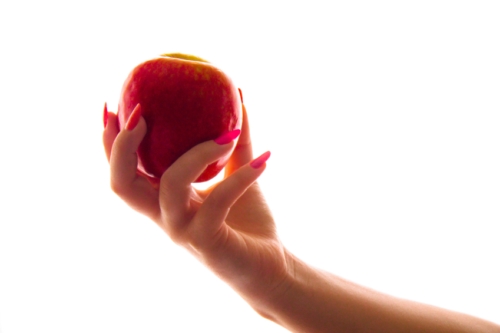 Sugar-laden fruit—it’s the devil, right? Or can some sources of it actually be less or more harmful than others? If so, how is that even possible?
Sugar-laden fruit—it’s the devil, right? Or can some sources of it actually be less or more harmful than others? If so, how is that even possible?
I’m sure by now that you’ve heard of all the harm sugar can do. Over the past two or three years, it’s become public enemy number one.
If you’ve got a sweet tooth, this causes some real problems. And it can cause you some real problems even if you don’t.
Sugar-Laden Fruit or Sugar-Laden Disaster?
Every time you indulge in a candy, some cake, a cookie, or a chocolate bar or take a sip of soda, you know you’re getting a big-time serving of sugar. But you’re also getting huge helpings of the stuff every time you bite into a piece of white bread, some crackers, or other refined carbohydrate foods. You’re taking in sugar when you drink fruit juice and take a bite of fruit, too. Sugar is virtually unavoidable unless you’re eating just meat all the time…which I don’t advise.
So what makes, say, the sugar in soda different from that of an apple? After all, you’ll get the same 40 grams of sugar from eating four apples as you will from a 24-ounce soda.
Fruit Is the Way to Go! Sugar-Laden Fruit Can Be Healthy
When you eat a piece of fruit—and I’m talking the whole fruit: skin and all—you’re getting natural sugars that are consumed in the company of fiber. Fiber slows down the absorption of sugar, preventing blood sugar spikes, insulin spikes, and the metabolic factors that contribute to conditions like metabolic syndrome and type 2 diabetes.
But adding a scoop of psyllium fiber or downing a shot of “Metamucil” after a soda or chocolate bar won’t have the same impact. It’s also why fruit juices and fruit smoothies aren’t healthy, either.
You see, the sugar in fruit is effectively insulated within fiber scaffolding in the cells. When consumed together as a whole, it takes your digestive system longer to break these cells down. When consumed as separate parts, sugars are absorbed instantly, causing blood sugar and insulin spikes.
When your blood sugar level rises, your pancreas secretes insulin, a hormone responsible for transmitting blood sugar, or glucose, into your cells and muscles as a source of energy. Once those stores are filled, it’s stockpiled in the liver or fat cells.
When sugar is consumed without the presence of fiber, it’s absorbed quickly and insulin responds. Absorption is even faster when sugar’s consumed as a liquid in the form of soda, fruit juice, or a fruit smoothie. Because these items along with refined grains like white bread and rice are a regular part of the diet, blood sugar surges and insulin spikes happen regularly, which can lead to insulin insensitivity. This is when metabolic syndrome and type 2 diabetes tend to show up.
So even though apples, pears, and countless other fruits are sweet sources of sugar, the way they are “packaged,” and therefore absorbed, makes all the difference in the world when it comes to your health.
This all means that there are no excuses: fruit is the way to go
Source for Today’s Article:
Egan, S., “Making the Case for Eating Fruit,” New York Times web site, July 31, 2013; http://well.blogs.nytimes.com/2013/07/31/making-the-case-for-eating-fruit/.
